An article in Forbes magazine of April 1983 compared the improvements in human athletic achievements to those in thoroughbred racing during the last 90 years. Since improvement was measured on the time-test (record times), it was not surprising that a big difference was found.
In the main, horses race to win, not to break records, and in general record holders are not always the best horses. That aside, the main point made in the article was that superior training methods in human athletics were one of the main causes of the superior progress. Training methods in horse racing seemed to be regarded as close to madness.
“The wise horse cares not how fast a man may run” – Old Armenian proverb
As one of South Africas top trainers put it: “The simple truth is, there are no training methods. When you get a good horse, you find out by trial and error what the horse responds to, to get him in peak condition”. Unfortunately that is what happens in most cases. The thoroughbred libraries contain virtually nothing by way of training methods – what you find is reminiscences, mainly from retired trainers with a knack for telling stories. Where do trainers learn, other than from older trainers? Are there really no methods?
In recent years, much has been written about human training methods. Remarkably, it was not until the Eighties that humans started to agree on what is best to achieve peak performances. Tim Noakes has put most of that in perspective in his recent book “The Lore of Running” , which draws on experiences not only from athletics, but also other sports (swimming in particular). It is rather unnerving to realise that a lot of what racehorse trainers found out many years ago, and still do today, is not all that far off current human “discoveries”. Another book to mention in this context is “The Fit Racehorse”, written by ‘American Tom Ivers in 1983; it tolls the virtues of equine interval training and shows up modern American thoroughbred trainers as bungling amateurs. The truth, as usual, lies somewhere in the middle. Much of what Noakes and Ivers write bout is directly comparable – there is much the same in the training for peak performance in both humans and horses. So let’s take a look.
ONE – Muscle contraction is the essential physiological event that allows men and horses to run.
Skeletal muscle, when contracting, produces locomotion. Each muscle comprises a vast number of individual cells. Each muscle cell is surrounded by tiny vessels (capillaries), which provide the blood supply; the number of capillaries increases with training. Within muscle cells we find mitochondria, structures which form the powerhouses of the cell. They consist of bags of enzymes, which change the energy from the food we eat into molecules called ATP, the energy currency of the body. Mitochondria function only if an adequate oxygen supply is available. In absence of sufficient oxygen an emergency system operates, in the form of a group of enzymes capable of storing muscle glycogen, to produce energy independent of oxygen supply. A third source of energy, fat droplets present in the muscle cells, is of importance only during prolonged exercise.
There are 2 types of muscle cells, randomly mixed in all muscle. One is red, due to high concentration of mitochondria, and called slow twitch (ST) fibres, the other white, with a low mitochondrial content, and called fast twitch (FT) fibres. Fast and slow relates to the speed with which ATP energy can be converted to muscle contraction.
However, many grades of slow and fast twitch muscle can be found, and the slow twitch muscle contraction speed of some men and horses can approach the fast twitch muscle speed found in others, and vice versa. Nevertheless, in human athletes patterns of muscle fibre content seems to relate to the sports in which they excel. Sprinters, jumpers and weight lifters have high proportions of fast twitch fibres, middle distance runners (up to a mile), cyclists, swimmers have equal proportions of ST and FT fibres, long distance runners and cross country skiers a high percentage of ST fibres.
It appears that the proportions of ST and FT fibres are genetically determined, so that success in a certain sport or event depends to a large degree on what you’re born with. It also appears that different degrees of training intensity are needed to develop each of the muscle fibre groups; low intensity activity trains ST muscles, while FT fibres only become active during high intensity exercise. Optimal training would be to train at all intensities to ensure that both muscle groups are fully trained. Ivers claims that horses respond remarkably to training related to a certain distance.
TWO – Supplying muscles with oxygen
With an increase in exercise intensity, there is an increase of oxygen consumption to produce more powerful muscular contractions. This demands increased amounts of energy, which in turn demands a greater oxygen supply. Shortly before an individual reaches his maximum work capacity, the rate of oxygen consumption reaches a plateau. This is called Maximum Oxygen Consumption ((or VO2 max). If the VO2 max level could be increased, the individual would be capable of greater effort. So what does VO2 depend on ?
Oxygen intake through the lungs, first of all, does not affect maximum oxygen transport; with maximum exercise the oxygen content of blood does not fall. Lungs therefore cannot be seen as a limiting factor to VO2 max.
The amount of oxygen that can be carried in the blood depends on the haemoglobin content of the blood, or rather the number of red blood cells and their haemoglobin concentration. It has been found in humans that “blood doping” (an artificial injection of red cells into the bloodstream) increases VO2 max and athletic performance. Ivers claims that in horses blood doping does not work, mainly because the horse does its own blood doping, by releasing from the spleen one third to one half the amount of red bloodcells, when exercising at high capacity. This explains perhaps the practice with trotters to work at full speed a few hours before a race, and the ability of trotters to race in heats shortly following each other without a deterioration in performance. It could well be good practice for thoroughbreds to work fast on the morning of a race day.
Thirdly there is the capacity at which blood can be transported, in other words the volume of blood the heart can pump. It appears that this is the major factor limiting VO2 max, and therefore performance. As far as training is concerned, it appears that VO2 max can be improved by 5% to 15% at most. Thus, in as much VO2 is measure of potential for success, there must be other factors that play a role in determining who will become champions. Even though “slow” runners in general have low VO2 max values, and “fast” runners have generally high VO2 max values, considerable differences exist within groups of runners of similar ability – the best runners do not necessarily have the highest VO2 max values, if measured against other topclass runners. The discriminating factor between runners of equal ability is running efficiency, which is the economic use of oxygen during performance; the less oxygen that is needed for effort, the better the performance given the level of VO2 max.
So: to be a good runner you need to have a high level of VO2 max, which level can be slightly improved with training. To be a topclass performer you need to have running efficiency, economy of effort. That comes from skeletal conformation, the ability to move smoothly, without waste of energy. And no doubt a hereditary factor in horses, since it mainly relates to conformation. Running efficiency in humans changes considerably with bodyweight, which plays a role in the transfer of energy in the horizontal plane. It follows that in horses bodyweight as well as weight in the saddle plays a role, while this must also be significant in the ability of some horses to carry weight much better than others.
“Muscle and speed is inborne, varies with the individual and can be increased little – if at all – by training. To this extent, therefore, one might say an athlete and particularly a sprinter, is born – not made.” (Franz Stampl, 1955).
Running efficiency changes with different forms of running (eg uphill, on the flat, or downhill), which in horses seems likely to be related to suitability to different types of going, or in running with headwind or following wind. Air resistance also plays a role: slip streaming can save up to about 6% of total energy expended, which explains the reluctance of some trainers to race horses from the front, especially over ground. It also appears that the larger the field and the further down the line, the more the “slip streamer” benefits. But this begins to get into the area of tactics, which has many other rules.
THREE – Providing Energy
To produce energy, or ATP, oxygen combines with various “fuels” in the mitochondria, in particular breakdown products of carbohydrates and fats. Carbohydrates provide muscle and liver glycogen; it has been found that training increases the capacity for muscles to store glycogen. Exercise causes depletion of glycogen stores, which can be restored within 24 hours after exercise by eating a high carbohydrate diet, or by infusion in the bloodstream of glucose or fructose in less than 12 hours. Carbohydrates are therefore an important part of pre-exercise diet to fill muscle and liver glucogen stores to maximum capacity.
When exercising at levels close to 100% of VO2 max, the bodyfuel ATP comes from a variety of sources, depending on the length of time of the exercise. At such a high level of effort, the oxygen supply simply is not great enough to keep up with the theoretically needed oxygen consumption, so that energy provided independent of oxygen is needed. This is where the enzymes which were capable of storing muscle glycogen play their role.
The muscle cell itself can store enough ATP to sustain 1 second of explosive muscular contractions (sprinting). Another store of intra-muscular creating phosphate provides ATP for another 6 seconds. Once intense activity lasts for more than a few seconds, muscle glycogen (the oxygen independent emergency energy source) gives energy for another 30 seconds, after which the oxygen dependent source (the mitochondria) takes over. After 90 to 120 seconds they are the predominant source of exercise. Through training it is possible to increase the length at which these energy sources stay active. And it appears that varieties of interval training would be the best possible way to do this. It is quite clear that giving maximum effort over a given period of time relates to the distance covered – which means that training must be distance specific to achieve maximum benefit. It is interesting to note that the mitochondria increase in size and number through endurance training (distance at speeds between 60-90% of VO2 max), so that horses running in any race lasting longer than, say, 90 seconds will benefit greatly from endurance training. In other words, the majority of racehorses will only thrive if distance training is included in their programme.
The adaptations in VO2 max to training occur rapidly. It is possible to show an increase in VO2 max within a week of starting an intensive training programme, and unless the intensity of the programme is increased progressively, all increase in VO2 will have been achieved within 3 weeks. But similarly, when training is interrupted, a rapid fall in VO2 max occurs within 2-3 weeks . The trick is to achieve the maximum increase in VO2 max by progressively increasing training intensity, without exceeding the threshold into “overtraining”.
FOUR – Training To Win
The initial key to successful training is the amount of time spent each week, rather than the distance covered, or the speed. Train for a certain time each session. Start gradually and train gently. Bones, tendons and muscles are simply not able to adapt overnight to the cumulative stress of regular training. For instance, sore shins in humans occur usually 5 to 12 weeks into training; they are mostly found in previously untrained subjects, and are aggravated by “doing too much too soon”, and running on hard surfaces; this injury usually disappears without treatment, within 4-10 weeks, even without interruption in training, as bones, muscles and tendons get stronger. That sounds remarkably like 2 YO thoroughbreds!
“As far as I’m concerned, the sprint test is the best way to judge your potential. Your basic speed – not your build, leg length or waist – should determine what distance you run. If you can’t run the 200m faster than 26 seconds, for instance, forget all about half-miling. All the training in the world won’t make you a champion at it. If you can’t run a 400m in 51 seconds, you can’t run 900m in 1.51 seconds, and if you can’t do that you don’t have a chance in todays racing circles.” (Lydiard/Gilmour, 1978).
Gradually increase the speed or effort that can be maintained for prolonged distances. Monitor the effort; a good yardstick is heart rate: the maximum benefit from training is achieved by training at between 60% and 90% of the maximum heart rate. Ideally heart rates should fall between these values for most of the training time. As time goes on, and endurance training takes its effects, the maximum heart rate will drop, which must be taken into account.
First train for distance, only later for speed. How far is “distance”? That varies from individual to individual. Start with as little as possible. Run a trial, see what happens. Then increase speed or distance in training somewhat. A trial should indicate what progress, if any, has been made. Increase the load until a platform appears to have been reached (which means that distance and speed should be increased gradually for all type of horses, from stayers down to sprinters – sprinters need distance work, too !). Any reactions of the body that indicate something abnormal (tiredness, listlessness, loss of appetite, increased fluid intake at night, loss of weight, increased blood eosinophil count, serial T-waves on the electrocardiogram) are more than likely to point at over-training, at doing too much.
Alternate hard and easy training days, give the body a chance to recuperate. Incorporate base training and peaking; it is now known that peak racing performance only occurs when a period of low volume, high intensity training (peaking) follows a prolonged build-up period consisting of high volume, low intensity training (base training). Base training mainly consists of slow, long running. The aim is to increase the mileage without overtraining, and to gradually increase the speed of the training session. That should take at least a period of 6 months before any sharpening is done. The slow pace conditions the cardiovascular system, helps to keep injuries to a minimum, gives continuous, slow improvement in performance. Sharpening consists of any of a number of different training methods, taking place at race pace or faster, for varying lengths of time. They may be done one to three times a week, depending on experience and physical strength. This should produce dramatic improvement in racing performance, but at the same time increases risk of injury and reduces resistance to infection. For this reason sharpening can only be maintained for relatively short periods, maximum 8 to 12 weeks. Some individuals require only a short period of sharpening before peaking, others longer. The first group usually stays at a peak shorter before having to return to base training. The other group needs more time to reach their peak, but maintains it longer. Clearly the first group will find it easier to peak several times during the year. And of course, once an individual starts to peak, hard training will become superfluous.
“Develop a base of several months of long aerobic runs, then begin interspersing several interval workouts per week, while attempting to maintain the same mileage level. These interval workouts should be of varying distances, from 220 yards through 880 yards, should start at gentle paces, but culminate with much sharper sessions as the runner approaches a targeted race. The recovery interval will for the most part be the same distance as the effort run, and will generally (but not always) be in the form of jogging. That’s it. That’s the only training you need to win gold medals in the Olympics” (Marti Liquori and John Parker, 1980)
FIVE – Interval Training
Interval training is probably the commonest method of peaking. But interval training takes time and is a precise thing to do, very time-related. For this reason it must be difficult to interval train racehorses – you need workriders with brains and understanding of what is to be achieved. You need time – a string of 30 or more horses will give great difficulties. Furthermore interval training is horse specific, and distance specific. No horse is the same, most horses need training for different distances. It is inconceivable that any trainer would be able to cope with more than a few horses, which from an earnings point of view more than likely becomes unviable.
Most importantly, though, interval training will improve performance by up to 15% at most. What does that mean, in terms of a horses ability? Tom Ivers claims in his book that he believes firmly that it is possible to win an American Derby with a mediocre horse. But he provides little proof of dramatic improvement. The case histories he quotes are thin, to say the least, while in theory he would have, by now, had plenty of time to prove his point. The only case mentioned which is measurable to some extent is that of Stanerra, an English mare which at the age of 5 won twice at Royal Ascot in the space of two days – quite a feat, and certainly an indication of fitness, most likely achieved with base training, not interval training. The claim is made that Stanerra’s owner started to interval train her after being dissatisfied with her conventional training method. Timeform said of her ”Stanerra improved out of all recognition…admirably tough, consistent and enthusiastic…”. In rating Stanerra went from 118 to 128 from 4YO to 5YO, an improvement of 10 pounds, or about 5 kilos. Since she was a middle distance performer, that amounted to about 10 lengths in performance. It was enough to make Stanerra from a smart performer into a topclass performer. But 5 kilos would never be enough to make a mediocre horse into a topclass performer. Also, Stanerra did not run at 2 and only twice at 3, so that her “best form”, which most horses reveal as 2YO’s, could not be measured.
The lesson to be taken is that, first and foremost, it is genetic ability and running economy (conformation) that determines how good a performer is. The famous Swedish physiologist Per-Olaf Astrand said: “To be an Olympic champion, I am convinced you must choose your parents carefully”. So with horses. It has never ceased to amaze me how 2YOs reproduce their early form consistently at a later age, making not more than the normal WFA improvement. Horses of that age can hardly be regarded as fully trained when they see the track for the first time in January or February. Yet the future champions can be picked out one by one, while the number of future wins for each and every 2YO can be predicted with equal certainty, given that they have the scope for normal improvement and stay sound. Which must put somewhat of a doubt on the use of interval training in preference to conventional methods, as far as the making of champions goes.
That is not to say that a horse cannot be made to perform better given the use of interval training. Chances are that it is entirely possible. Whether this is worth the effort depends on the circumstances; owners and trainers will have to decide what an improvement in ability of a few kilos will mean to them. It could be a difference of just another race, or it could be the “Triple Crown” instead of just the Richelieu Guineas !
“You give a coach the horses, and they can make any coach look good” (Old baseball saying).
SIX – Method in our Madness
Most racehorse trainers appear to follow the recommended pattern of long, slow distance work, combined with sharpening sessions. Whether they do it in the right doses, or the right order, will vary from individual to individual, and from horse to horse. Some trainers follow the same pattern with all their horses, other trainers do what suits their horses best. The latter group should have the edge in the long run, as the contents of this article will have shown you.
Tim Noakes’ book “The Lore of Running”, from which much of the above was extracted, must be prescribed reading for any trainer of racehorses, even though it deals exclusively with humans. Tom Ivers’ “The Fit Racehorse” covers much of the same ground, but in lesser detail, even though all is related to racehorses. Worth reading as well, no doubt, for the serious student of training methods, although Ivers’ preoccupation with proving how right he is and how backward the thinking of most trainers becomes somewhat testing. The truth, as said before, must lie somewhere in the middle. Certainly there is method in the apparent madness of most trainers of thoroughbreds. To improve upon habits, well, that’s each man for himself. There is certainly more to read and ponder about today than there was a few years ago.
Have Your Say - *Please Use Your Name & Surname*
Comments Policy
The Sporting Post encourages readers to comment in the
spirit of enlightening the topic being discussed, to add opinions or correct
errors. All posts are accepted on the condition that the Sporting Post can at
any time alter, correct or remove comments, either partially or entirely.
All posters are required to post under their actual name and surname - no anonymous posts or use of pseudonyms will be accepted. You can adjust your display name on your account page or to send corrections privately to the Editor. The Sporting Post will not publish comments submitted anonymously or under pseudonyms.
Please note that the views that are published are not necessarily those of the Sporting Post.
3 comments on “The Method In Our Madness”
Leave a Reply
‹ Previous
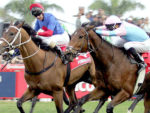


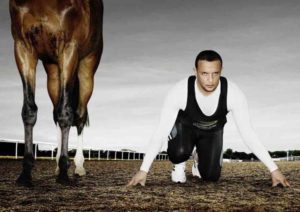
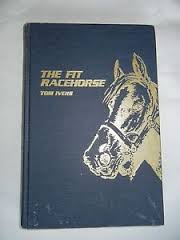
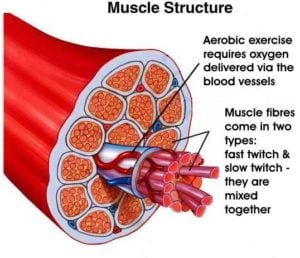
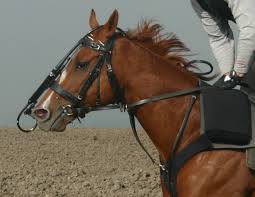
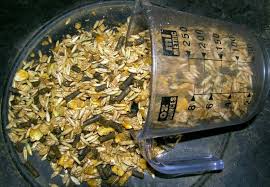
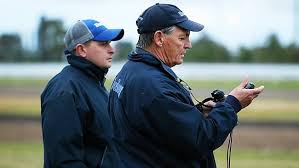
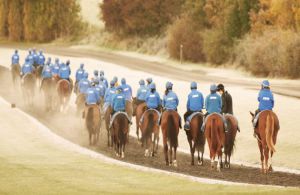
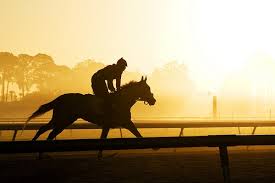
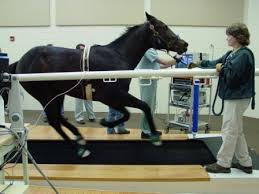
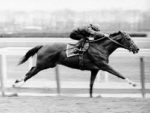
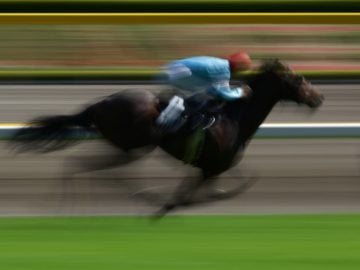
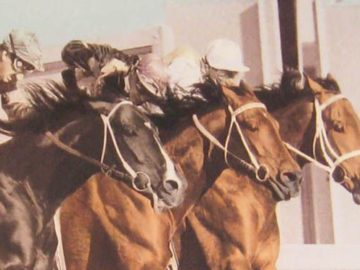

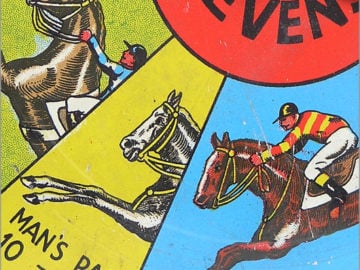






How correct this article is.
I met Tom Ivers in Flemington N.J. about 1980 when he had just started “interval training” with a very ordinary horse. The horse made its first start for Tom, went about ½ mile and slowed up real quick, like a very ordinary horse can do.
Tom then went on to become a self appointed “guru” of interval training where it would be correct to say that the results generally were not conclusive as to the benefits. In fact, many horses can be stressed too much and become pullers.
Chance of injury and overtraining is very real.
Horse training is mainly common sense and patience, patience, patience which most owners are deficient in and the trainer has to get quick results.
For every good horse born, there are a thousand scientific theories and a thousand more supplements to make them “perform” better.
Check out how many horses are raced by vets. and supplement suppliers – virtually NIL. After all, if the theories were correct,they would own all the winners!
It is much easier to train a Standardbred. The human 4 minute mile is equal to a 2 minute Standardbred trotting mile. It can be a little difficult to train any horse from a human training speed program and again from the pure endurance, human marathon program. As the article implies, somewhere in the middle will be about right. Having trained both equine and human species at elite levels it has been my own experience that most horse trainers, not all, but most have a very limited view of physiology and physics in general. Or is it just pure coincidence that the letters p h y s i are the first 5 letters in both words? A little biology of which chemistry is part is also necessary. Add to that, nutrition and health care and bingo with a little math a good beginning is assured. We work athletes and athletes do work. The reference by the author “Per Olaf Åstrand et al” refers to the “Text Book of Work Physiology” essential reading for all trainers, The Karolinska Institute Sweden is not given enough credit. Bengt Saltin was Per Olaf Åstrands supervisor and it is surprising just how many equine research studies he has his name on! Not to mention the equine researchers from the same place.
As a retired professional human health care professional money is not the motivator that some believe. Passion, truth and empathy are the best motivators in racing horses and that equals wealth to successful international horse trainers.
Takk.
Andy.
.